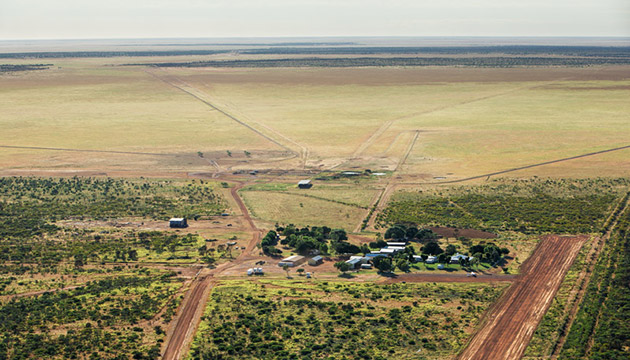Life on the Barkly Tableland’s Helen Springs offers abundant rewards to those who call it home.
Story By Kerry Sharp
In the quiet of dawn, first-year jillaroos Benita Bauer and Belinda Milsom head out along a dirt track to join the day’s muster. Benita has just finished Year 12 on neighbouring Brunchilly outstation, where her Mum, Yvonne, has successfully home-tutored her and her younger sister all the way through school. Belinda, who’s also the home tutor on Helen Springs, is fresh from two years as the full-time governess on Mittiebah Station. Her duties take her from the stock camp to the classroom: when school’s in, she and head primary school teacher Sam Wood, formerly from Headingly Station, have their hands full keeping four young minds off their horses and on their lessons.
Benita and Belinda chat about how much they love the sunrise out here on the Barkly, and about the wild dog they spotted eyeing off cows the other day. The casual banter inadvertently highlights the great gulf between the good and bad aspects of station work. Wild dogs rate among noxious weeds, poor rainfall and soil degradation as challenges causing major headaches for the northern cattle industry. Like its counterparts, Helen Springs has an ongoing dog-control program in place to keep ahead of the pack and protect its herd and livelihood.
Helen Springs Station is owned by pastoral giant S. Kidman & Co and borders the Stuart Highway about an hour north of Tennant Creek in the Northern Territory’s western Barkly region. The station and its closely integrated Brunchilly outstation cover 10,198 square kilometres, of which two-thirds is open, black soil Mitchell and Flinders grass country, and the rest undulating red, loamy country with copious swamps, and spinifex and buffel grasses. The properties receive an average of 420 millimetres and 430mm of annual rainfall apiece and hold an average of 55,000 cattle between them, but can accommodate more than 60,000 head – as they did at the end of the 2013 season.
The herd is comprised mostly of Brahman and Charbray cross cattle, with new Charbray bulls being purchased each year from Queensland breeders. The station has also been trialling a composite mix of Tuli, Brahman, Charolais and Murray Grey cross genetics to test their suitability to local conditions.
This Story is from Issue #97
Outback Magazine: Oct/Nov 2014










